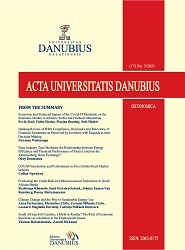A GARCH analysis of the holiday effect in the South African equity market
A GARCH analysis of the holiday effect in the South African equity market
Author(s): Batsirai Winmore Mazviona, Gisele Mah, Ireen ChogaSubject(s): National Economy, Business Economy / Management, International relations/trade, Financial Markets
Published by: Editura Universitară Danubius
Keywords: Seasonal Anomalies; GARCH; EGARCH; TGARCH;
Summary/Abstract: The holiday effect is one of the most noticeable seasonal anomalies in financial markets, and it appeals to technical traders who use past data from trading activities to devise profitable strategies. The purpose of this article is to assess the South African equity market's holiday anomaly. The financial data employed consists of market and sectorial indices of the Johannesburg Stock Exchange (JSE) spanning from 1995 to 2018. The holiday effect was modelled by Generalized Auto Regressive Conditional Heteroskedasticity Model (GARCH), exponential GARCH (EGARCH) and threshold GARCH (TGARCH) models. Negative pre-holiday effect was found in aggregate and sectorial indices for the variance equation. The mean and variance equations unveiled a post-holiday effect in market and sectorial indices. Basic materials should be avoided by investors since it increases their exposure. By investing in the Basic Materials sector, the pre-holiday trading strategy can help investors reduce their risk exposure. When it comes to post-holiday seasonal trading, investors should concentrate on the Telecommunications sector to generate higher profits. Investors can minimize losses by avoiding the Industrials sector, which increases risk exposure. In contrast to previous empirical research that focused on aggregate indices, our analysis delineates holiday anomaly for sectorial indices in South African equity.
Journal: Acta Universitatis Danubius. Œconomica
- Issue Year: 17/2021
- Issue No: 5
- Page Range: 263-275
- Page Count: 13
- Language: English

